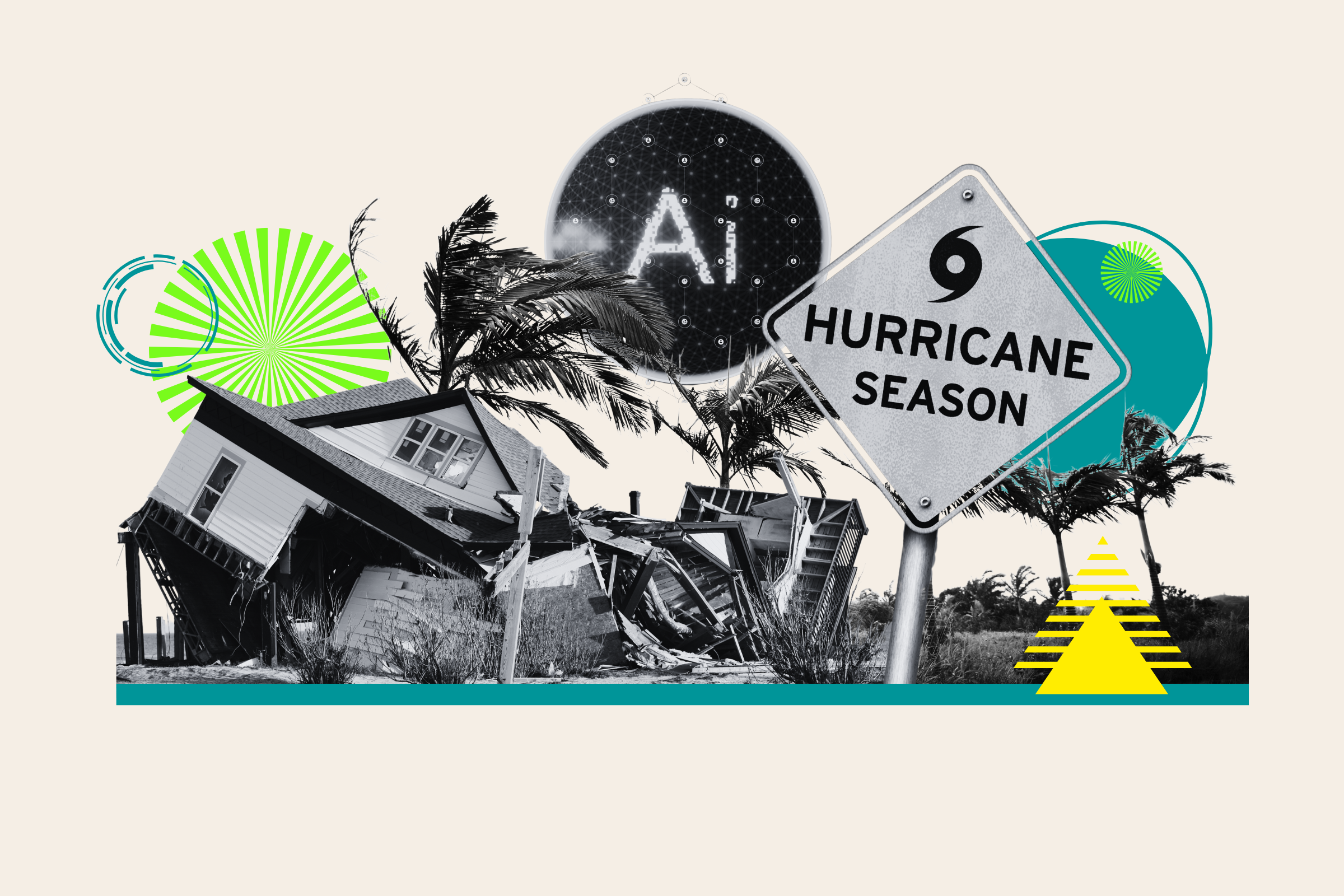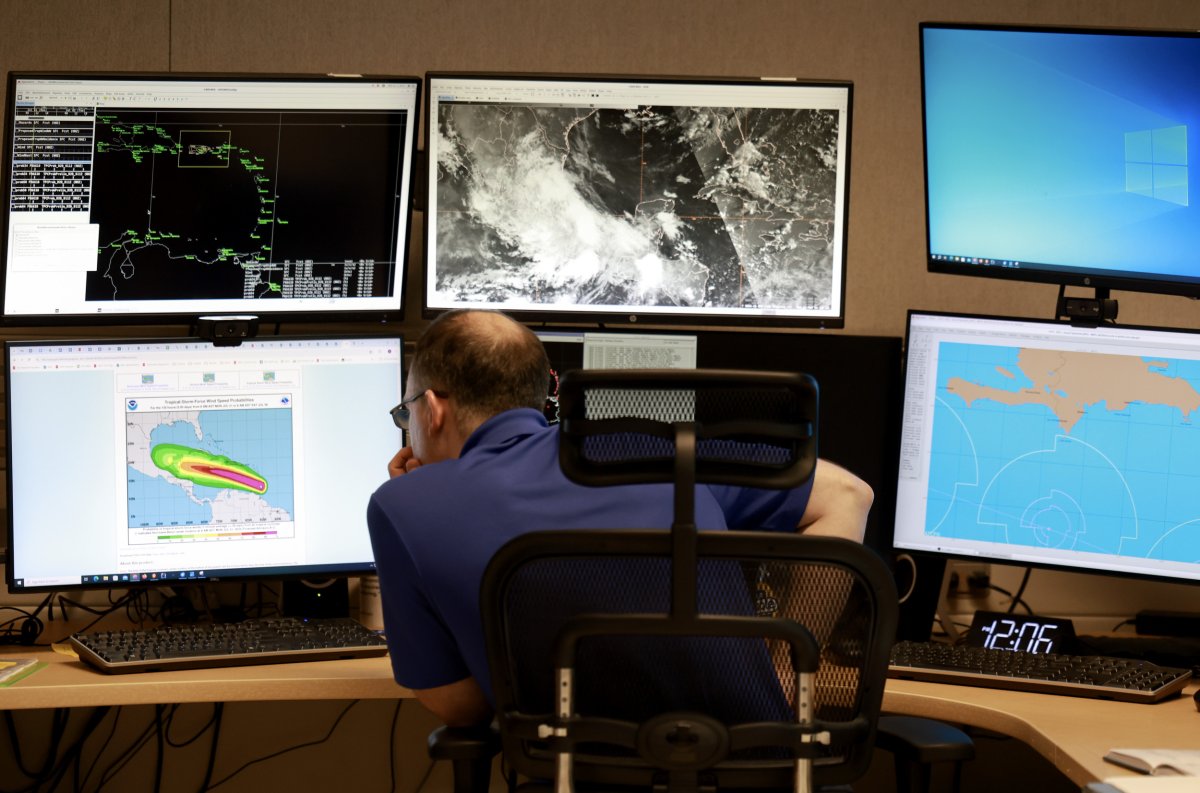
Weather models based on artificial intelligence (AI) are better than traditional forecasts at tracking tropical storms, new research has found, part of a wave of AI breakthroughs that could improve warnings for extreme weather such as hurricanes.
“To our surprise, we saw that for the first time an AI system could outperform all existing operational forecasts for all those hurricane events,” Paris Perdikaris, an associate professor in the School of Engineering and Applied Science at the University of Pennsylvania, told Newsweek.
Perdikaris spent a year with Microsoft Research working on a large-scale AI model called Aurora that was trained on more than one million hours of data from various Earth systems. On May 21, Perdikaris and collaborators at Microsoft Research published results in the journal Nature. Aurora did better than traditional forecasts in a range of predictions, including a 20 to 25 percent improvement in tracking tropical storms over two to five days.
“We see a uniform improvement across the board in terms of the accuracy,” Perdikaris said.
Photo-illustration by Newsweek/Getty
It’s the latest in a string of promising reports on AI forecasting for extreme weather.
In December, researchers at the AI lab Google DeepMind also published in Nature results from its machine learning forecast system, called GenCast. The researchers wrote that GenCast “better predicts extreme weather, tropical cyclone tracks and wind power production.”
In February, the European Centre for Medium-Range Weather Forecasts (ECMWF) put its AI Forecasting System (AIFS) into operation and reported that it outperforms state-of-the-art physics-based models for many measures, including tropical cyclone tracks.
“The AIFS typically does a more accurate job of moving large-scale weather systems around the globe,” Matthew Chantry, strategic lead for machine learning at ECMWF, told Newsweek via email. “Storms, are typically more accurately positioned.”
AI is not a panacea for tropical storm forecasting, scientists said, and recent research has exposed some weaknesses in AI forecasting. One study found that while AI systems do well at tracking a hurricane’s path, they tend to underestimate wind speed and storm strength.
But with climate change supercharging storms, AI promises to be a valuable addition to our warning system, potentially helping to save lives and prevent property damage.
Cheaper, Faster Weather Modeling
The Weather Company, producers of The Weather Channel, Weather Underground and Storm Radar, have been developing AI and machine learning for forecasting tools for years, according to Peter Neilley, senior vice president of weather forecasting services and operations.
“It’s just gotten more sophisticated and that enabled us to create these data-driven models,” Neilley told Newsweek. “So that’s all culminated in this sort of revolution for weather.”
Neilley explained that, unlike traditional weather models in which supercomputers work through complicated physics formulas, AI systems operate by learning from patterns from historical weather data.
Building the AI model takes a lot of work and computing power, he said, but “they’re very cheap to run once you’ve built the model.”
That, Neilley said, is AI’s main benefit. Where traditional physics-based models can take hours, an AI model could take less than a minute.
“What that enables you to do is actually run them many, many times and each time, you’re running a slightly different model,” he said. “With that much better prediction of how it may play out, I can use that to help people and businesses make better decisions.”

Joe Raedle/Getty Images
The Weather Company President Sheri Bachstein will be among the speakers at Newsweek‘s AI Impact Summit June 23 to 25 in Sonoma, California, to talk about how the company is investing in AI.
In the past year, The Weather Company has partnered with NVIDIA to produce more granular forecasts using AI and to improve weather simulations. Another collaboration with government scientists aims for better integration of vast weather data to get a clear snapshot of the state of the atmosphere, the critical starting point for forecasting.
AI Cannot Replace Need for Basic Data
Neilley said the AI approach can also yield a different type of forecast, one with a probabilistic range of outcomes to consider. While that rich outlook offers many benefits in some extreme weather conditions, such as an approaching hurricane, it could lead to information overload.
“Just giving decision makers more complicated information is probably making their job harder,” he said. “What is needed is an AI-based decision modeling system on top of the weather model.”
The AI company Urbint aims to provide that sort of informed weather preparation for electric utility companies. In April, Urbint acquired StormImpact, an AI company that predicts the risk of storms, wildfires and floods for utility infrastructure.
“They don’t just need to know that a storm is coming—they need to know which circuits will go down, how many customers will be impacted, and what resources they’ll need on the ground to restore power quickly and safely,” Urbint CEO Corey Capasso told Newsweek via email. The system predicts what transformers, substations and overhead lines are most vulnerable.
“That means utilities can anticipate not just if, but where and how the grid will be impacted, and start planning for the exact number and type of crews needed,” he said.
StormImpact’s technology is already being used by major utility companies, including Southern Company, American Electric Power and FirstEnergy.
Weather-related disruptions cost utility companies an average of $70 billion annually, Urbint said. A report released earlier this month by the Electric Power Research Institute shows extreme weather events causing at least $1 billion in damage are becoming more frequent. From 2019 to 2023, billion-dollar disasters happened about 20 times a year.
Climate scientists warn that our warmer atmosphere is contributing to many extreme weather events. Warmer air holds more moisture leading to more intense rainfall and flooding, and higher sea surface temperatures fuel tropical storms.
As we head into this Atlantic hurricane season on the heels of the two hottest years on record, several forecasts predict a busier than average season. Several veteran storm forecasters have voiced concerns about the Trump administration’s deep cuts to the National Weather Service and its parent agency, the National Oceanic and Atmospheric Administration (NOAA), warning that some key weather bureaus are understaffed and basic data gathering has been compromised.
It may be tempting to look to the advances in AI to fill gaps left by those cutbacks. But for all the potential benefits AI holds for weather forecasting, researchers caution that it is not a replacement for existing systems of gathering and analyzing weather data.
“We still need the raw data,” the University of Pennsylvania’s Paris Perdikaris said.
“We still need high quality data coming from physics-based simulation models that have been in place all these years.”
